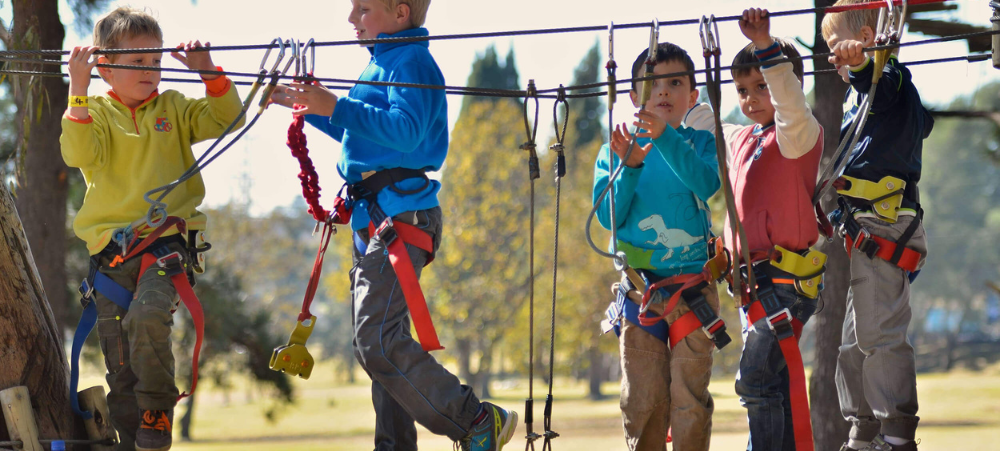Encountering strangers, seeing a big dog for the first time or starting school are all situations which can induce fearful responses in children.
Childhood fears and anxiety are not only normal but they are expected for each developmental age. This is because any perceived “threat” activates a fight-or-flight response in the body, which naturally serves to protect us from any harm or danger. This article looks at common childhood fears for each developmental age and offers tips on how you can help your child manage during those times.
Babies and infants (0-2 years old) Newborn babies and infants tend to prefer their primary caregivers over unfamiliar faces and voices. Children in this age group tend to often experience stranger and separation anxiety—they shy away from people who they do not know and may even show fear towards them.
You can help your child deal with this by:
- Comforting and soothing them to show them that they are safe in that moment.
- Helping them get to know the person while you are there (this will take some time).
- Teaching them that separation from you is temporary (peek-a-boo is a great example).
- Saying goodbye to your child instead of getting away when they are distracted— this can lead to mistrust. Toddlers and pre-schoolers (3-6 years old) Children this age have developed a very active imagination and create different scenarios all the time in their busy little minds. They also may show signs of separation anxiety (“What happens to my mommy when she’s not with me?”) and refuse to be alone or sleep alone. Toddlers also worry about the dark, bad dreams, monsters and ghosts, loud noises, bad guys and bugs or animals.
Children this age also struggle when there are sudden and disruptive changes to their routine.
You can help your child cope by:
- Listening to what they are scared of and helping them put their fear into words or through drawing.
- Helping your child face their fears (e.g., shop for a nightlight together or make a bottle of “monster spray”).
- Reassuring your child of real-life facts (e.g., there are policemen who protect us from bad guys).
- Positively reinforcing the bravery that they manage to show. Middle childhood (6-9 years old) School-going children often worry about this new experience—“What will it be like?”.
For the first time they are put into a situation where they will have to navigate new experiences without you by their side. They are exposed to the “bigger, real” world and may worry about their teachers, them getting sick or hurt or traumatic situations they hear about.
You can help your child cope by:
- Encouraging your child to talk about what they are thinking or feeling.
- Playing it out with them or reading stories with themes of risk and fear to normalise their feelings. Watching your child grow is often filled with moments of joy and celebration. Usually parents focus on physical milestones, such as rolling over, crawling and using the potty independently, which are important indicators of development. However, developing these abilities can also come with psycho-social and emotional challenges for children. child development By Reabetsoe Buys 44
- Showing your child that they have the capacity to cope (by using examples of when they have shown this).
- Reassuring them to talk to a teacher if anything bothers them while they are at school. Pre-teens (10-12 years old) While children this age have pretty much figured out that monsters aren’t real, they tend to worry about things which can happen in real life. This includes being in danger, being caught in natural disasters or something bad happening to their parents. They may also worry about their school performance, fitting in with friends and their physical appearance.
You can help your child cope by:
- Gathering facts with them—they love to learn! (e.g., the prevalence of natural disasters in the area you live).
- Helping them prepare for school-related things such as tests, presentations and performances.
- Being aware of what they are watching and listening to—is it appropriate? What is it exposing them to?
- Encouraging them to externalise their thoughts and feelings through writing, music or movement.
Adolescence (13 years old+) Typically, teenagers become more peer-oriented. Therefore their concerns tend to be around peer perceptions, as well as their relationships with friends and romantic interests. They may also start to worry about “growing up”, global issues, their health and well-being, and their life purpose as an adult.
You can help your child cope by:
- Encouraging them to talk about the challenges they are anticipating.
- Offering them the space to process their own thoughts and feelings (e.g., through journalling or art).
- Advising them that if they cannot talk to you about certain things, they should have a healthy network of people who they can talk to.
- Reinforcing positive behaviour, no matter how small. While some of these moments may feel challenging and overwhelming for you as a parent, remember that being consistent and open is what will allow your child to better manage with their own thoughts and feelings. They need to feel safe enough to feel what they need to feel without having to worry about upsetting you or anyone else. If your child’s worries increase in intensity, seem out of proportion to the situation or start to significantly interfere with their habits and functioning, it may help to consult with a professional who can offer guidance and support
- Tips for Breastfeeding Success! - October 17, 2023
- Helping your child deal with common childhood fears - September 21, 2023
- Keeping Fit while you’re Pregnant - August 29, 2023





